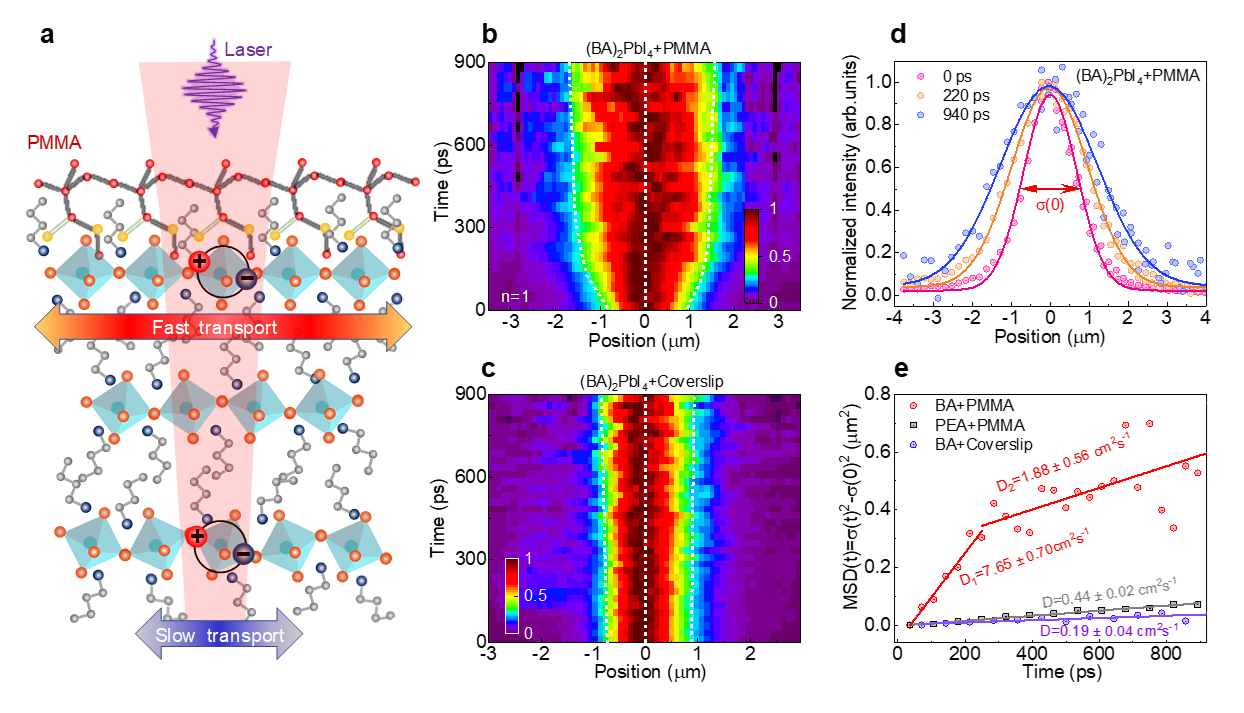The study, led by Prof. LIU Xinfeng from the National Center for Nanoscience and Technology (NCNST) of the Chinese Academy of Sciences (CAS), recently reported an enhancement in exciton mobility in a two-dimensional Ruddlesden-Popper perovskite. The findings have been published in Nature Communications (DOI: 10.1038/s41467-024-45740-y).
Exciton mobility is a critical factor influencing the optoelectronic properties of 2D Ruddlesden Popper perovskite (2D RPP). However, its mobility is observed to be one order of magnitude lower than that of the corresponding 3D perovskite. Various factors such as exciton-exciton annihilation, interlayer coupling, and defects can impact the exciton transport behavior in 2D RPP.
Despite substantial progress, the precise correlation between exciton transport and lattice properties, especially concerning exciton-lattice interactions, remains elusive. Furthermore, there is an urgent need to adjust exciton-phonon interactions to tailor exciton transport characteristics for applications in 2D perovskite-based optoelectronics.
Prof. LIU’s group at the National Center for Nanoscience and Technology, in collaboration with Prof. Wu Bo at South China Normal University and Associate Prof. Zhang Qing at Peking University, has successfully achieved a boosted exciton mobility approaching the Mott-Ioffe-Regel Limit (MIR) in 2D RPP by anchoring the soft butyl ammonium cation with a polymethyl methacrylate (PMMA) network at the surface (Fig. 1).
The research team have directly monitored ultrafast exciton propagation process in (BA)2(MA)n-1PbnI3n+1 R-P perovskites by time-resolved photoluminescence microscopy. They revealed that the free exciton mobilities in exfoliated thin flakes can be improved from around 8 cm2V-1s-1 to 280 cm2V-1s-1. The mobility of the latter is close to the theoretical limit of Mott-Ioffe-Regel criterion.
Combining optical measurements and theoretical studies, the study revealed the enhanced exciton mobility is attributed to the anchoring of surface BA molecules by PMMA network, which significantly improve the lattice rigidity and reduce the disorder. As a result, the deformation potential scattering rate reduces by 8 times at room temperature, leading to the transition of exciton propagation from the hopping regime to the band-like transport regime (Fig. 2).
LIU stated that these insights shed light on the strong correlation between exciton transport, lattice rigidity, and exciton-lattice interactions. These findings offer valuable insights into the mechanisms of exciton transport in 2D perovskites with a soft lattice and provide guidance on how to tune exciton transport properties through lattice engineering.

Figure 1. Exciton transport in exfoliated (BA)2PbI4 RPP flakes encapsulated by coverslip and PMMA. (Image by LIU Xinfeng et al)

Figure 2. Exciton diffusion approaching MIR limit. (Image by LIU Xinfeng et al)
Contact:
LIU Xinfeng
National Center for Nanoscience and Technology




